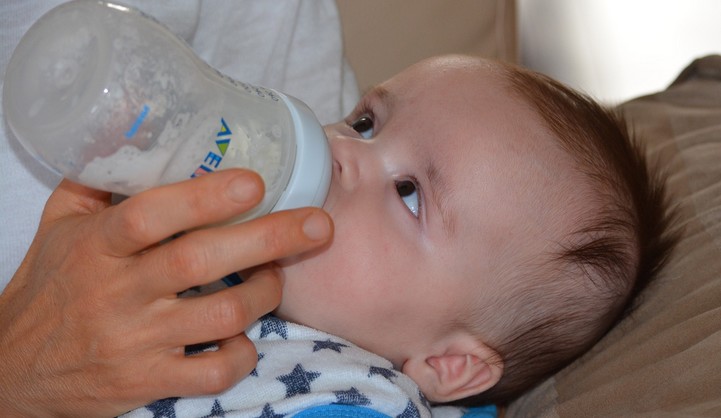
Infants in child care programs have special feeding needs, and developing a feeding plan should be an important part of enrolling an infant in child care. Parents and child care providers must work together closely to ensure that infants are being fed in ways that promote healthy growth. Child care providers are responsible for feeding infants in their care appropriately based on the regular feeding routines parents have developed in consultation with their child’s pediatrician.
Helping Parents Make Infant Feeding Decisions
As a child care provider, you are responsible for following the parents’ guidelines for feeding their infants. It’s important to talk to parents often about this issue. Work together to establish a written feeding plan that describes what to feed infants and how often. Keep feeding recommendations filed with the infant’s records and post copies in the feeding area of the infant room. Use some of the following recommendations to help guide the feeding plan.
-
Babies grow more rapidly in the first year of life than at any other time. Babies double their birth weight in the first 4 months of life and triple their birth weight by their first birthday.
-
Infants need the same nutrients as children and adults: protein, carbohydrates, fat, water, vitamins and minerals. Infant foods also must contain enough calories to promote normal growth and development at this critical time.
-
Parents may choose to breastfeed their infants or to provide commercial infant formulas. Either type of feeding contains the calories and nutrients infants need for the first 4 to 6 months. Infant formula should be iron fortified. Child care providers can decide whether to provide commercial infant formula as a part of their child care program, or to require parents to bring appropriate amounts of formula to child care each day.
-
Child care programs can support breastfeeding mothers and infants. Mothers who choose to breastfeed can express their milk using a pump and bring the milk in to be fed to the baby in a bottle.
-
Breast milk and infant formula are the only foods recommended for the first 4 to 6 months of life. Vitamin and mineral supplements are not usually necessary and should be given only when recommended by a physician.
Safe Handling of Infant Bottles in Child Care
-
Label all infant bottles with the baby’s name and date. Ask parents to label bottles before bringing them. Have labels and a marker on hand in case they forget.
-
Store prepared bottles in the refrigerator. Store frozen breast milk in the freezer until feeding time and then thaw it in the refrigerator or under cool, running water. Do not warm bottles on the stove, which may cause the milk to curdle.
-
Wash your hands carefully with soap and water before preparing any bottle. Do not touch nipples with your fingers.
-
Do not warm bottles in the microwave. Uneven heating may cause hot spots, which can burn a baby’s mouth. Cover all bottles during storage.
-
Prepare commercial infant feedings according to instructions. Add the right amount of water to ensure that the infant gets adequate calories and nutrients.
-
Throw away any breast milk or formula left in a bottle after feeding. If too much seems to be going to waste, record the amount usually used and prepare a smaller amount. You also may ask parents to save breast milk in smaller bottles.
-
Clean reusable bottles and nipples thoroughly after each use. Bottles and nipples may be washed in a dishwasher in very hot water or washed by hand and boiled for five minutes before refilling.
Appropriate Bottle-Feeding in Child Care
-
Feed infants whenever they seem hungry. Babies need to eat frequently, especially if they are breastfed. Expect to feed infants approximately every two to three hours.
-
Meet individual infants’ needs. Feed each infant on an individual schedule and don’t expect all babies to be hungry at the same time. Babies grow rapidly and hunger needs change quickly.
-
Hold babies when you are feeding them. Holding infants during feeding helps them feel more safe and secure. Holding babies also reduces the risk of their choking on breast milk or formula.
-
Avoid giving bottles to infants in their cribs. If an infant falls asleep while feeding and an adult is not present to remove the bottle, milk may remain in the mouth during sleep. The sugar naturally found in this milk can cause cavities in new or forming teeth. Teeth with cavities may hurt or break, making it difficult for a child to chew.
-
Never let infants or toddlers carry bottles. They easily can fall and injure themselves. Children who carry bottles may share sips with other children, which increases their risk of sharing infections.
For More Information
To learn more about infant nutrition issues in a child care setting, take a look at the following eXtension Alliance for Better Child Care articles:
